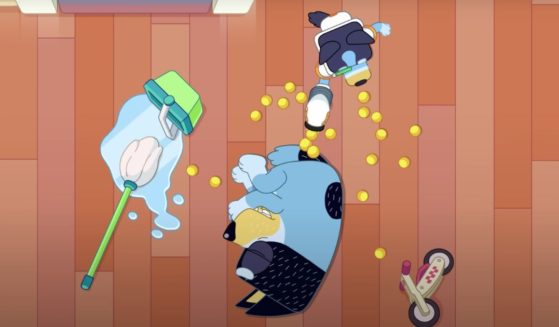Veterinarians Warn of Pet Killer Lurking in Backyard, Like Taking 'Bullet to Your Dog'
Just like humans, dogs need exercise. For some owners, taking their dogs out to open areas for a game of fetch is one of their favorite ways to spend time with their furry companions.
When we take our dogs out, we should already have our minds on basic safety risks. You don’t leave your friend in a hot car, you need to be careful to keep them away from areas likely to have snakes and other would-be aggressive animals, and you have to keep your eyes peeled for poisonous plants.
Although dogs love to explore, sometimes their exploration gets them into serious trouble. With a rise in injuries and infections, veterinarians are warning dog owners to be vigilant about a specific type of grass typically found in the western United States.
Foxtail grass is a type of weed that looks similar to the harmless, though annoying, common weed that looks like wheat. What makes Foxtail dangerous is its seed awns.
Foxtail’s seed awns are sharp little needles that help its seed penetrate the ground. Designed to go one direction, once they begin to burrow, they do not fall out.
The awns are so strong that they can burrow through soft tissue. This is particularly dangerous for dogs who get into everything, but cannot effectively communicate what they have been up to or that they are uncomfortable.
Left unchecked, these awns continue to burrow deeper into the soft tissue causing abscesses, infections, and sometimes, death. On account of their inability to talk, veterinarians are urging owners to stay vigilant about where your dogs play and learn the symptoms that indicate your pooch’s exposure to Foxtail.
Foxtail season is typically from May to December. As it is harder to spot Foxtail awns on dogs with longer fur, it is advisable to keep your dog trimmed particularly during these months.
Foxtail is known to hide in overgrown grass fields, but can also turn up in your backyard. Check your property frequently for the weed, and avoid playing in under-maintained areas.
When playing in wild areas, make it a habit to thoroughly check your dog. These awns can stick and begin to burrow anywhere, particularly the paws, nose, ears, and eyes.
Generally, if your dog is incessantly licking or pawing at an area, that’s a sign of irritation, and should be carefully checked for Foxtail. Awns between the toes may cause a limp. Excessive scratching and head twitches may indicate an awn in the ear.
With eyes, on top of pawing, there may be redness, swelling, and discharge. Frequent sneezing and excessive discharge may be a sign of a Foxtail awn in the nose.
While these soft tissues are the easiest penetration points for Foxtail awns, the tenacious awns can puncture the skin anywhere, wreaking havoc on internal organs. Even an awn caught in the gums could cause serious complications.
If, upon inspection, you discover an awn that can be easily accessed, it is recommended that you carefully remove the awn with tweezers. If the awn is out of reach, or pervasive symptoms indicate Foxtail impalement, please take your pet to the vet immediately.
Not only is your companion made miserably uncomfortable by a burrowing awn, the pesky plant seeds can reach the brain, causing catastrophic results. Awns can also puncture lungs and other internal linings.
Just as we must do with children, it is imperative that we check the spaces our canine buddies have access to. Their inquisitive nature far exceeds their sense of internal infection and illness. Even if you don’t let your pooch run wild in the great outdoors, make sure you don’t have this deadly plant burrowing in your backyard.
Truth and Accuracy
We are committed to truth and accuracy in all of our journalism. Read our editorial standards.











